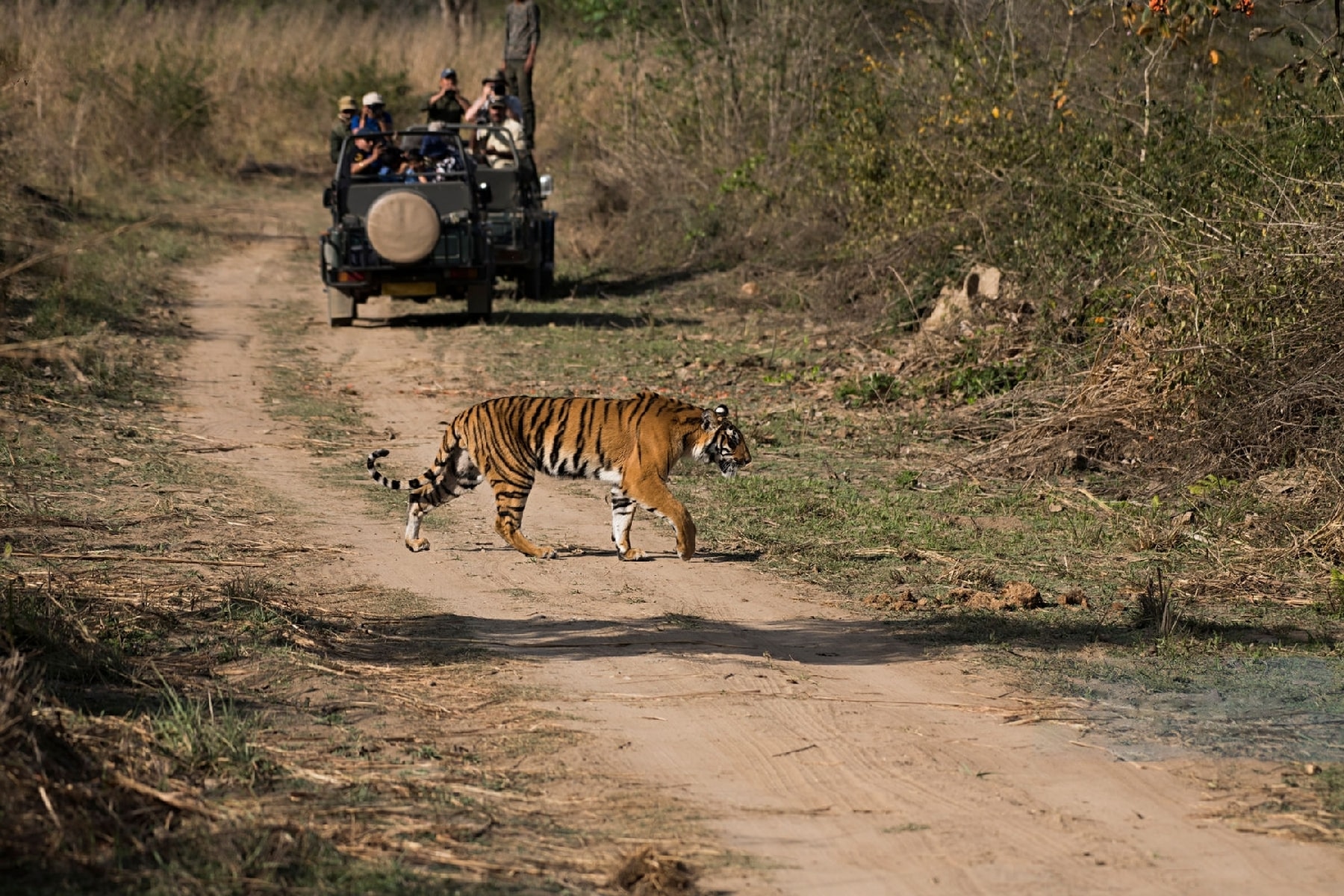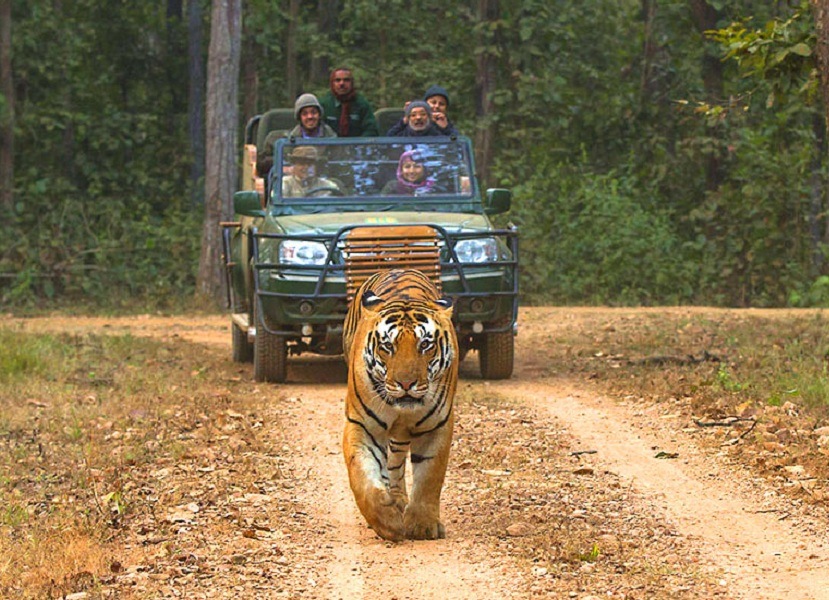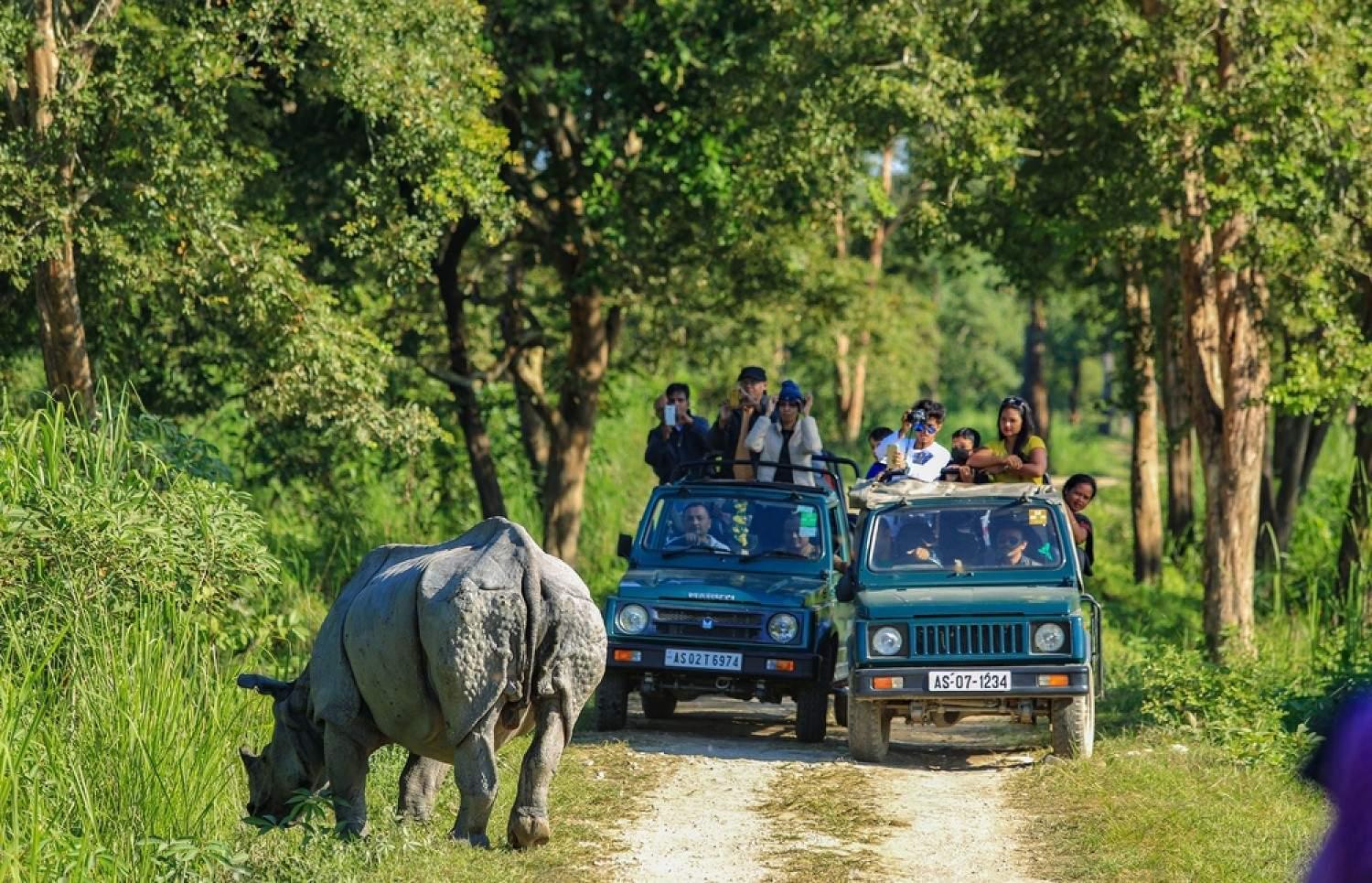ndia is a land of incredible natural diversity, home to some of the world’s most unique wildlife species. From the mighty Bengal tiger to the one-horned rhinoceros, and from Asiatic lions to wild elephants, India offers unparalleled wildlife experiences.
Whether you’re a seasoned wildlife photographer, a passionate naturalist, or simply an adventure seeker, India’s national parks and wildlife sanctuaries provide a perfect escape into nature. In this detailed guide, we explore the
best wildlife safari destinations in India – where to go for tigers & beyond,
offering insights into the wildlife, landscapes, and the best times to visit.
Why India is a Top Wildlife Safari Destination
India boasts more than 100 national parks and over 500 wildlife sanctuaries, covering diverse ecosystems – dense tropical forests, dry deciduous jungles, mangrove swamps, and grasslands. The country is home to over 70 species of mammals, 1300 species of
birds, and countless reptiles, amphibians, and insects.
Some of the top reasons to choose India for a wildlife safari include:
-
Tiger Capital of the World: India is home to over 70% of the world’s wild tiger population.
-
Diverse Ecosystems: From mangroves in Sundarbans to high-altitude forests in Uttarakhand, each park offers a unique experience.
-
Varied Safari Options: Jeep safaris, elephant safaris, boat safaris, and walking safaris cater to all preferences.
-
Rich Cultural Context: Many parks are intertwined with history and culture, adding depth to your safari journey.
Top Wildlife Safari Destinations in India
1. Ranthambore National Park, Rajasthan

Ranthambore National Park, located near Sawai Madhopur, is a hotspot for wildlife enthusiasts and photographers. Famous for its tiger population, the park provides excellent chances of spotting the big cats in their natural habitat.
-
Wildlife highlights: Bengal tigers, leopards, sloth bears, jackals, striped hyenas, marsh crocodiles, and various bird species.
-
Unique features: The iconic Ranthambore Fort inside the park offers a scenic backdrop for wildlife photography.
-
Best time to visit: October to April, when wildlife is more active, and water sources are scarce, drawing animals into sight.
2. Jim Corbett National Park, Uttarakhand
Jim Corbett National Park is India’s first national park, established in 1936. Spanning the Himalayan foothills, the park is renowned for its lush Sal forests and diverse wildlife.
-
Wildlife highlights: Tigers, leopards, wild elephants, sambar deer, gharials, and over 600 bird species.
-
Safari types: Jeep safaris in the Dhikala zone, walking safaris, and birdwatching tours.
-
Best time to visit: November to June, avoiding the monsoon months.
3. Bandhavgarh National Park, Madhya Pradesh

Bandhavgarh National Park is famed for having one of the highest tiger densities in India. Its terrain of dense forests, rolling hills, and ancient ruins creates a picturesque safari setting.
-
Wildlife highlights: Tigers, leopards, wild boars, sambar deer, barking deer, and langurs.
-
Unique features: The historic Bandhavgarh Fort within the park adds cultural significance to the safari.
-
Best time to visit: November to April
4. Kanha National Park, Madhya Pradesh

Kanha National Park is not only one of India’s most beautiful tiger reserves but also a habitat for the rare Barasingha, a swamp deer species that has been successfully conserved here.
-
Wildlife highlights: Tigers, Barasingha, leopards, wild dogs (dholes), jackals, and peafowls.
-
Unique features: Wide meadows and dense forests provide ideal conditions for wildlife spotting.
-
Best time to visit: October to March
5. Pench National Park, Madhya Pradesh & Maharashtra
Pench National Park, straddling Madhya Pradesh and Maharashtra, inspired Rudyard Kipling’s
The Jungle Book. Known for its healthy tiger population and scenic landscapes, it is a favorite among wildlife photographers.
-
Wildlife highlights: Tigers, leopards, jackals, sloth bears, wild boars, and over 300 bird species.
-
Unique features: Its mix of forest and open grassland makes spotting predators easier.
-
Best time to visit: November to April
6. Kaziranga National Park, Assam

Kaziranga is a UNESCO World Heritage Site and one of
the best wildlife sanctuaries in India. Famous for the one-horned rhinoceros, it also shelters tigers, swamp deer, elephants, and migratory birds.
-
Wildlife highlights: One-horned rhinos, tigers, swamp deer, elephants, wild boars, and migratory birds.
-
Unique features: Jeep and elephant safaris along the Brahmaputra floodplains provide diverse viewing angles.
-
Best time to visit: November to April
7. Sundarbans National Park, West Bengal
Sundarbans is the largest mangrove forest in the world and a unique wildlife destination. Its tiger population is adapted to the aquatic terrain, and boat safaris provide an unforgettable experience.
-
Wildlife highlights: Royal Bengal tigers, saltwater crocodiles, fishing cats, spotted deer, and a variety of bird species.
-
Unique features: Boat safaris through narrow creeks and tidal rivers offer a different perspective of wildlife viewing.
-
Best time to visit: November to March
8. Gir National Park, Gujarat
Gir National Park is the only natural habitat of the Asiatic lion. The park also has leopards, striped hyenas, jackals, and numerous bird species.
-
Wildlife highlights: Asiatic lions, leopards, hyenas, jackals, and over 300 bird species.
-
Unique features: Seeing a lion in its natural habitat is a once-in-a-lifetime experience.
-
Best time to visit: December to April
9. Periyar Wildlife Sanctuary, Kerala
Nestled in the Western Ghats, Periyar Wildlife Sanctuary is renowned for its elephant population. The sanctuary features serene Periyar Lake, where boat safaris allow you to observe wildlife up close.
-
Wildlife highlights: Wild elephants, gaurs, tigers (rarely sighted), sambar deer, and hornbills.
-
Unique features: Boat safaris on Periyar Lake provide an unmatched view of animals drinking at the water’s edge.
-
Best time to visit: October to March
10. Nagarhole National Park, Karnataka
Part of the Nilgiri Biosphere Reserve, Nagarhole is a scenic wildlife park rich in flora and fauna. It shares borders with Bandipur and Kabini, making it an ideal destination for spotting tigers and elephants.
-
Wildlife highlights: Tigers, leopards, wild elephants, Indian bison, and sloth bears.
-
Unique features: Dense forests and winding rivers make safaris here particularly exciting.
-
Best time to visit: November to April
Wildlife Safari Tips for India
To make the most of your safari, consider these essential tips:
-
Book Safaris in Advance: Parks have limited permits, especially for popular zones like Bandhavgarh and Ranthambore.
-
Choose the Right Season: Winter and post-monsoon months are ideal for spotting wildlife.
-
Carry Essentials: Binoculars, cameras, insect repellent, sunscreen, and a hat are crucial.
-
Respect Wildlife: Keep a safe distance, avoid loud noises, and never feed animals.
-
Stay Near the Park: Lodges and resorts inside or close to parks provide early safari access.
-
Hire Experienced Guides: Local guides improve your chances of spotting elusive animals and provide valuable insights.
Beyond Tigers: Other Wildlife Wonders
India’s wildlife experiences are not limited to tigers. Here’s a glimpse of other incredible wildlife you can witness:
-
Asiatic Lions: Only in Gir National Park, Gujarat.
-
One-Horned Rhinos: Exclusive to Kaziranga National Park, Assam.
-
Wild Elephants: Periyar, Nagarhole, and Jim Corbett.
-
Leopards: Common in Ranthambore, Jim Corbett, and Jawai.
-
Birdwatching: Bharatpur Bird Sanctuary (Keoladeo National Park) is a paradise for bird enthusiasts.
Each destination offers unique wildlife encounters, ensuring your safari is as diverse as it is thrilling.
Planning Your Wildlife Safari in India
When planning a safari, consider:
-
Itinerary: Combine nearby parks for an extended wildlife experience, e.g., Bandhavgarh and Kanha.
-
Accommodation: Opt for jungle lodges or luxury resorts with guided safaris.
-
Transport: Jeep safaris are standard; elephant safaris are offered in select parks.
-
Photography: Early morning and late afternoon are the best times for photography due to soft lighting and increased animal activity.
Conclusion
India offers some of the most breathtaking wildlife experiences in the world. Whether you want to track tigers in dense forests, observe elephants drinking by lakes, or glimpse the majestic Asiatic lion, the country’s parks and sanctuaries deliver unforgettable
adventures. From the northern Himalayas to the southern Western Ghats, every region promises unique wildlife encounters.